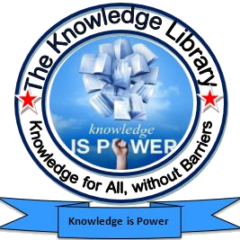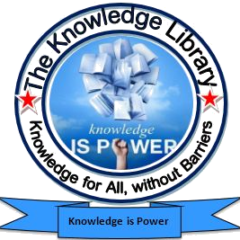30 Bilingual Interesting Earth Facts
Q. What is the shape of the Earth?
पृथ्वी का आकार कैसा है?
Answer: Oblate spheroid (गोलाभ विन्यास)
Q. Which is the largest ocean on Earth?
पृथ्वी का सबसे बड़ा महासागर कौन सा है?
Answer: Pacific Ocean (प्रशांत महासागर)
Q. Which gas is most abundant in Earth’s atmosphere?
पृथ्वी के वायुमंडल में सबसे अधिक गैस कौन सी है?
Answer: Nitrogen (नाइट्रोजन)
Q. What is the Earth’s core mostly made of?
पृथ्वी का कोर मुख्य रूप से किससे बना है?
Answer: Iron and Nickel (लौह और निकेल)
Q. Which is the longest river on Earth?
पृथ्वी की सबसे लंबी नदी कौन सी है?
Answer: Nile River (नील नदी)
Q. What causes day and night on Earth?
पृथ्वी पर दिन और रात क्यों होते हैं?
Answer: Rotation of the Earth (पृथ्वी का घूर्णन)
Q. Which is the highest mountain on Earth?
पृथ्वी का सबसे ऊँचा पर्वत कौन सा है?
Answer: Mount Everest (माउंट एवरेस्ट)
Q. Which layer of Earth contains all life?
पृथ्वी की कौन सी परत जीवन को धारण करती है?
Answer: Biosphere (जैवमंडल)
Q. What is the percentage of water on Earth’s surface?
पृथ्वी की सतह पर जल का प्रतिशत कितना है?
Answer: 71%
Q. Which is the largest desert on Earth?
पृथ्वी का सबसे बड़ा रेगिस्तान कौन सा है?
Answer: Antarctica (अंटार्कटिका)
Q. Which planet is known as Earth’s twin?
किस ग्रह को पृथ्वी की जुड़वां संज्ञा दी जाती है?
30 Bilingual Interesting Earth Facts
Answer: Venus (शुक्र)
Q. What is the deepest point in the ocean?
महासागर में सबसे गहरा बिंदु कौन सा है?
Answer: Mariana Trench (मेरियाना गर्त)
Q. Which layer protects Earth from harmful UV rays?
कौन सी परत पृथ्वी को हानिकारक यूवी किरणों से बचाती है?
Answer: Ozone Layer (ओज़ोन परत)
Q. What is the movement of Earth around the Sun called?
सूर्य के चारों ओर पृथ्वी के घूमने को क्या कहते हैं?
Answer: Revolution (परिक्रमण)
Q. Which is the smallest continent on Earth?
पृथ्वी का सबसे छोटा महाद्वीप कौन सा है?
Answer: Australia (ऑस्ट्रेलिया)
Q. Which layer of the Earth contains the tectonic plates?
पृथ्वी की कौन सी परत में टेक्टोनिक प्लेटें होती हैं?
Answer: Lithosphere (स्थलमंडल)
Q. Which gas is essential for human survival?
मनुष्यों के जीवन के लिए कौन सी गैस आवश्यक है?
Answer: Oxygen (ऑक्सीजन)
Q. How old is the Earth approximately?
पृथ्वी की अनुमानित उम्र कितनी है?
Answer: Q.5 billion years (Q.5 अरब वर्ष)
Q. Which country is known as the “Land of Volcanoes”?
किस देश को “ज्वालामुखियों की भूमि” कहा जाता है?
Answer: Indonesia (इंडोनेशिया)
Q. What is the largest freshwater lake by volume?
आयतन के अनुसार सबसे बड़ी मीठे पानी की झील कौन सी है?
Answer: Lake Baikal (बाइकाल झील)
Q. Which is the coldest place on Earth?
पृथ्वी पर सबसे ठंडा स्थान कौन सा है?
Answer: Antarctica (अंटार्कटिका)
Q. What is the molten rock inside the Earth called?
पृथ्वी के अंदर पिघली हुई चट्टान को क्या कहते हैं?
Answer: Magma (मैग्मा)
Q. What is the study of Earth’s physical structure called?
पृथ्वी की भौतिक संरचना के अध्ययन को क्या कहते हैं?
Answer: Geology (भूविज्ञान)
Q. Which is the windiest place on Earth?
पृथ्वी पर सबसे तेज़ हवाओं वाला स्थान कौन सा है?
Answer: Commonwealth Bay, Antarctica (कॉमनवेल्थ बे, अंटार्कटिका)
Q. Which phenomenon causes earthquakes?
कौन सी घटना भूकंप उत्पन्न करती है?
Answer: Tectonic plate movement (टेक्टोनिक प्लेटों की गति)
Q. What percentage of Earth’s water is freshwater?
पृथ्वी के कुल जल का कितना प्रतिशत मीठा पानी है?
Answer: Q.5%
Q. Which is the oldest active volcano on Earth?
पृथ्वी का सबसे पुराना सक्रिय ज्वालामुखी कौन सा है?
Answer: Mount Etna (माउंट एटना)
Q. What is the boundary between Earth’s crust and mantle called?
पृथ्वी की भू-पर्पटी और मेंटल के बीच की सीमा को क्या कहते हैं?
Answer: Mohorovičić Discontinuity (मोहोरोविचिक असंततता)
Q. Which country has the most lakes?
किस देश में सबसे अधिक झीलें हैं?
Answer: Canada (कनाडा)
Q. Which is the most abundant mineral in Earth’s crust?
पृथ्वी की भू-पर्पटी में सबसे अधिक मात्रा में पाया जाने वाला खनिज कौन सा है?
Answer: Feldspar (फेल्डस्पार)
30 Bilingual Interesting Earth Facts
30 Bilingual Interesting Animal Facts

